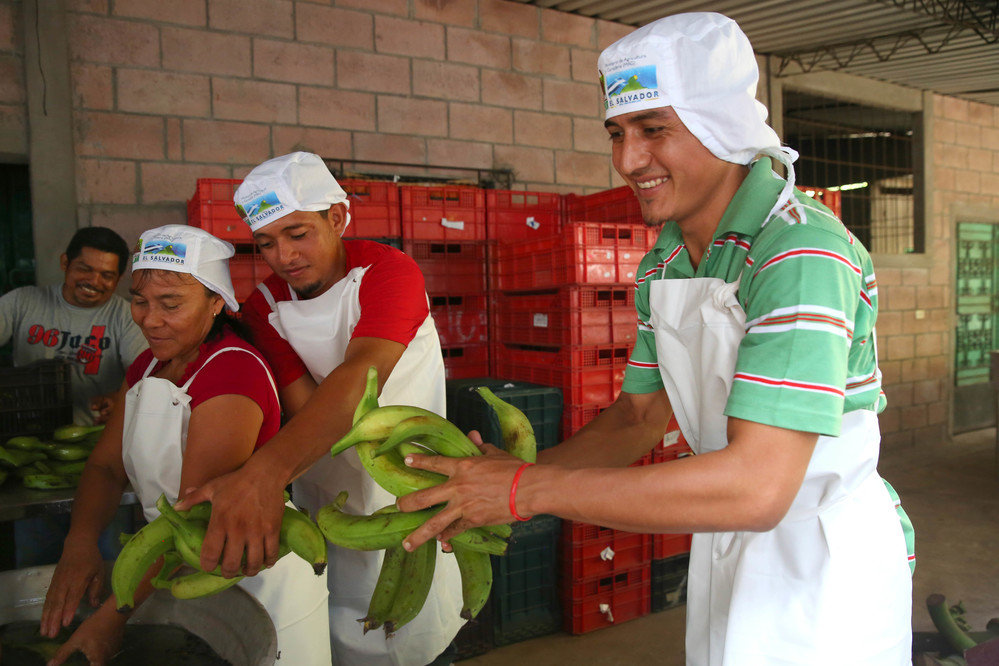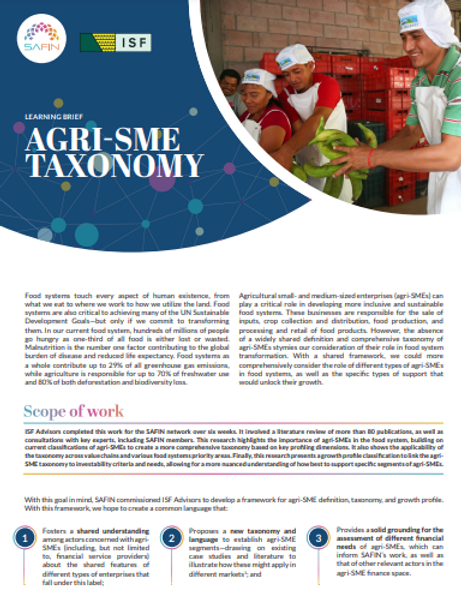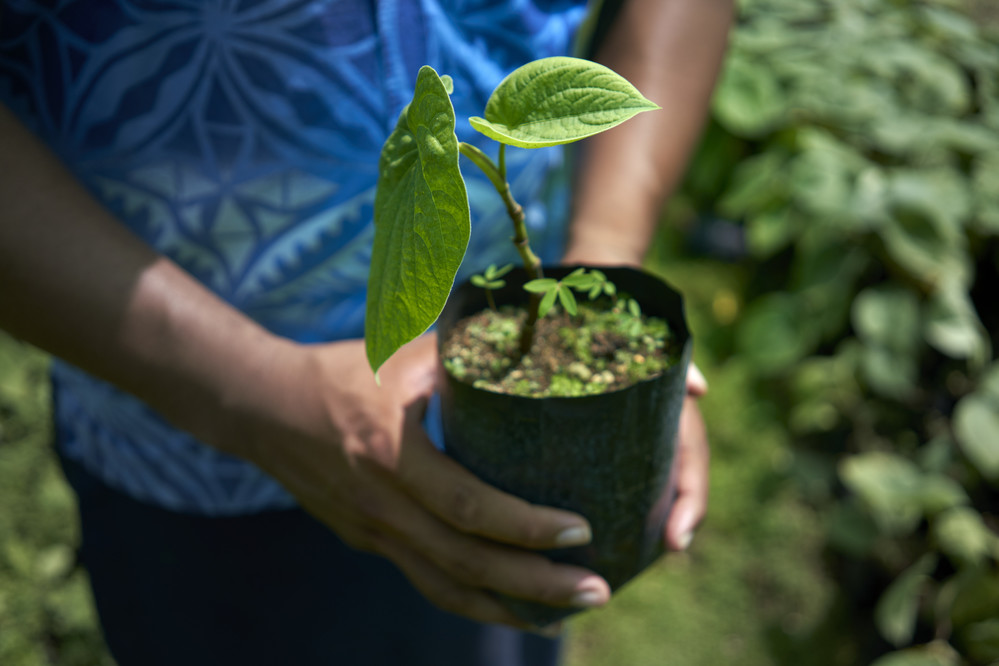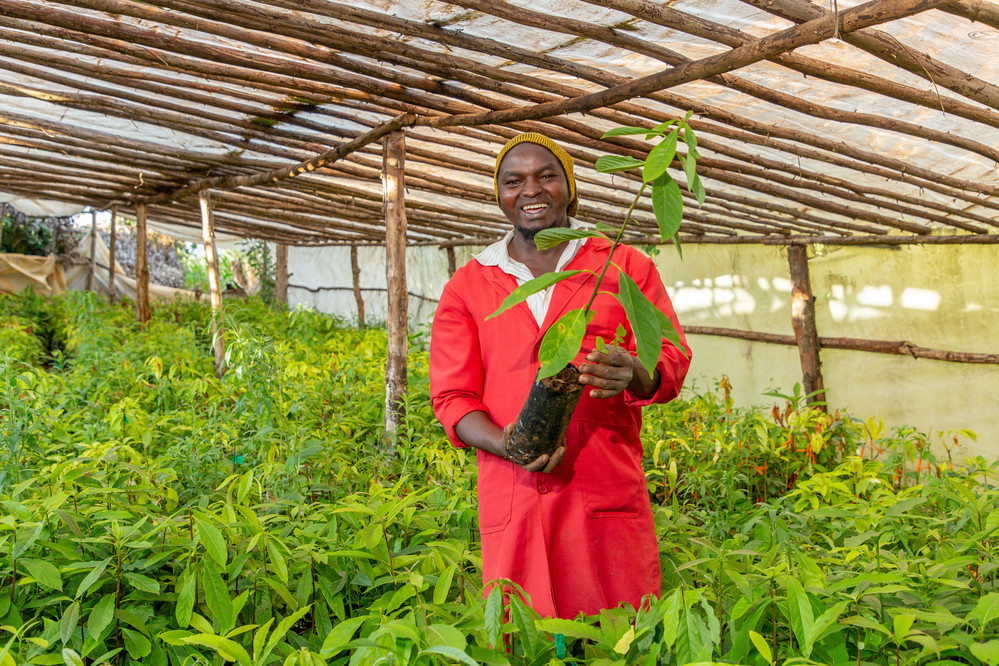The last few years have seen a significant evolution in our thinking about the role of small and medium-sized agricultural enterprises (agri-SMEs)in the sector. The COVID-19 pandemic and corresponding health restrictions highlighted their importance in relation to food security and the economy, as well as their vulnerability to external shocks. A number of new groundbreaking reports have helped us understand their position on the pathway to prosperity for rural households, but also some of the challenges in bridging the financing gap to unleash the growth potential of these enterprises. Meanwhile, a new set of standardized bankability metrics for agri-SME finance has been developed with the objective of helping bridge this gap.

Photo: ©IFAD/Carla Francescutti
Nevertheless, every attempt to improve our understanding of the role and needs of agri-SMEs has faced a common challenge-businesses in this segment do not form a unified or homogeneous block in terms of size or activities. Instead, enterprises typically included under the definition of “agri-SME” can differ widely in terms of their asset base, number of employees, and revenues. This is largely because the term tends to encompass all types of enterprises, from agri-tech companies, to input suppliers, processors, and even farmer cooperatives.
To address this challenge, SAFIN commissioned ISF Advisors to help define an acceptable segmentation of agri-SMEs that could be used within the network and beyond. This work aimed to align SAFIN partners around a shared understanding of the type of entities that would be included under the term “agri-SME”. This would allow for a better understanding of their role within a given value chain or food system, and their corresponding investment and/or technical assistance needs.
In light of the lack of clarity surrounding the term itself, it was important to include a common definition for “agri-SMEs” that could anchor subsequent discussion on the taxonomy. However, any effort to build on or harmonize existing definitions must contend with the vast differences in definitions used by relevant global actors like the European Commission or the ANDE network, as well as the varying official definitions adopted by different countries. Ultimately, a recommendation was made to propose a global definition based on specific business and investment thresholds, particularly for benchmarking purposes, but to refer to official national definitions when considering country specific value chains or food systems.
ISF Advisors has proposed a flexible taxonomy framework that is both comprehensive, covering the full range of enterprises, and adaptable to different countries and value chains. The framework is also meant to function as a practical tool that can be used to highlights specific gaps, needs or opportunities to be addressed by actors in the agri-finance ecosystem. For example, if applied to the five action tracks of the UN Food Systems Summit, the proposed taxonomy framework can be used to reveal which agri-SME segments are most relevant to each track. Eventually, the hope is that this approach can be used to inform and guide investment decisions based on specific food systems outcomes the transaction seeks to achieve.
This work is only the first step in a wider effort to bring more clarity to the segmentation of agri-SMEs. Over time, we hope that the proposed taxonomy can increasingly be integrated into, and be refined by, new and existing food systems programs and initiatives that align with SAFIN’s own activities to improve access to finance for agri-SMEs, while enhancing our understanding of the sector and increasing our capacity to effect transformative change through targeted finance and investment.


